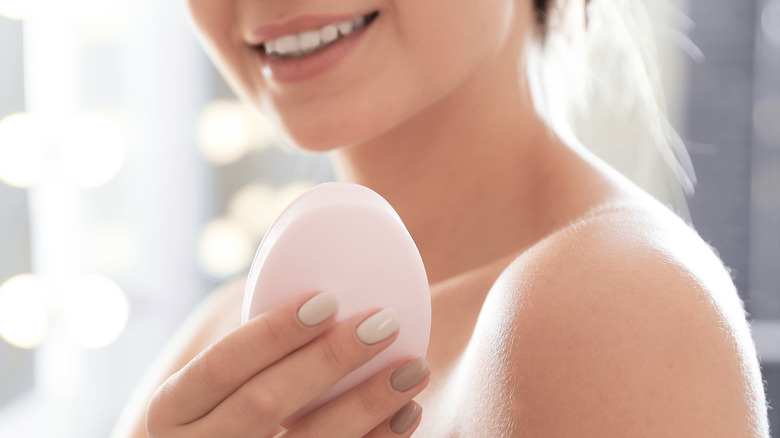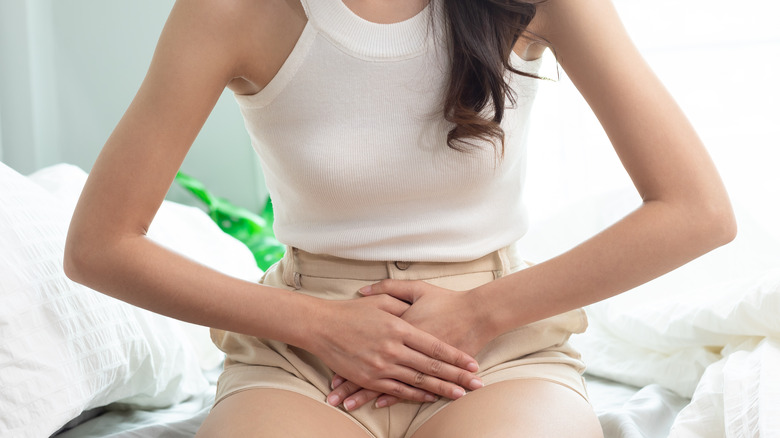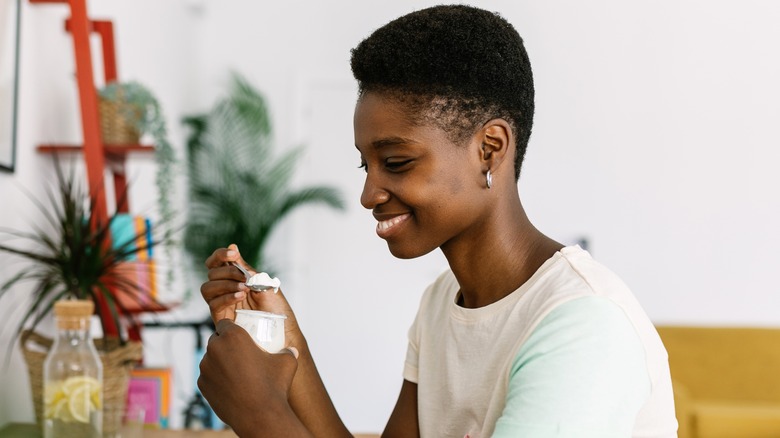Why Your Soap May Be Causing Your Frequent Yeast Infections
Many of us are not strangers to yeast infections. In fact, as many as 75 per every 100 women experience the discomfort of at least one vaginal yeast infection during their lifetime, according to 2019 research published in InformedHealth.org. Yeast infections have everything to do with the delicate microbial balance maintained within the vagina. When this balance gets knocked out of whack, it can lead to the development of a yeast infection.
Yeast infections can seem a little mysterious because the cause of one person's infection may not be the same cause as another person's infection. For example, certain medications, stress, pregnancy, the use of birth control pills, or moisture trapped in the area due to wearing tight clothing can all lead to an overgrowth of yeast, prompting uncomfortable inflammation. The infection can also spread from one person to another through sexual intercourse. Some people may not experience any symptoms whatsoever, while others may be subject to burning sensations, pain, itchiness, swelling, redness, or discharge discoloration.
Soap can throw off the microbial balance of the vagina
Some people find that they experience yeast infections on a more regular basis. While this may occur for a number of different reasons, one of those reasons may be residing in your shower: bar soap. Bar soap can throw off our natural pH balance, particularly products containing fragrance. However, gynecologist Dr. Christina Enzmann tells Good Clean Love that this isn't the only way in which bar soap can harm the vagina. "The soap scum [from bar soap] deposits into vaginal mucosa and disrupts the cell-to-cell adhesion barrier, which strips it of its defense mechanism and makes it vulnerable to yeast infection," Dr. Enzmann told the publication.
You may be curious — is the same true for body wash products? While the make-up of liquid body wash is generally a little softer on the skin than the harsher chemicals found in bar soap, these products can still affect the vaginal microbial balance if they are not specifically designed with the health of the vulva in mind. How can we best care for our vaginal health while keeping the risk of recurrent yeast infections low?
Reducing your risk of yeast infections
It's important to be mindful of which areas you're trying to keep clean. The vagina is the inner canal inside the body and takes care of itself through the form of discharge. Therefore, you should not be cleaning inside the vagina. When it comes to the outside of the body, however, you can use gentle, vulva-safe soap products with water to keep the labia and clitoris clean. Remember to avoid harsh scrubbing with a loofah. Instead, softly cleanse the area using your hand. Additionally, direction matters — you don't want your hand to transport bacteria from the anus to the urethra. Therefore, clean the area much like you would wipe yourself, moving from front to back.
Lastly, consider some additional tips for keeping yeast infections at bay. For example, be sure to always promptly change out of wet or sweat-soaked clothes. According to University Hospitals, incorporating certain food items into your diet — such as yogurt — while simultaneously reducing your sugar intake can also help support a healthy vaginal pH balance.



